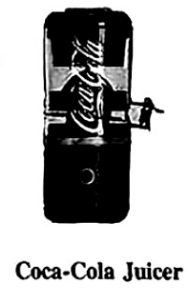 If there may be any errors when using the juicer, please confirm the following points before contacting the customer service for support.
If there may be any errors when using the juicer, please confirm the following points before contacting the customer service for support.
1. Error: Can't work
Reason: Dead battery
Solution: Charge in time
2. Error: Stop suddenly during working
Reason: 1)The fruit is too big
2)The battery is down
Solution: 1)Cut small pieces of fruit
2)Charge in time
3. Error: Abnormal noise
Reason: 1)Parts of the machine are not installed in place
2)The machine is placed in an inclined (倾斜的) position when working
Solution: 1)Confirm whether parts of the machine are well assembled
2)Put the machine on a level surface for use
4. Error: There is food overflow when working
Reason: 1)The fruit is too big
2)The upper cover is not installed correctly
Solution: 1)Cut small pieces of fruit
2)Install the upper cover correctly
5. Error: 1) The red alarm light flashes for about 10 seconds
2)The charging indicator light is not bright
Reason: 1)The battery is dead or the automatic protection is on
2)The charging cable is not connected
Solution: 1) Charge in time
2)Connect the charging cable
Warranty(保修)exception
The product is not covered by the warranty if it breaks down or is damaged under any of the following circumstances.
1. The products used are obtained through other channels than the company's sales channels.
2. Products whose warranty card is lost and cannot provide relevant supporting materials.
3. Damage caused by disassembly or repair of the product by any individual other than the special repair designated(指定) by the company.
4. Product damage judged to be man-made.
If any repairs occur, the relevant fees will be charged.